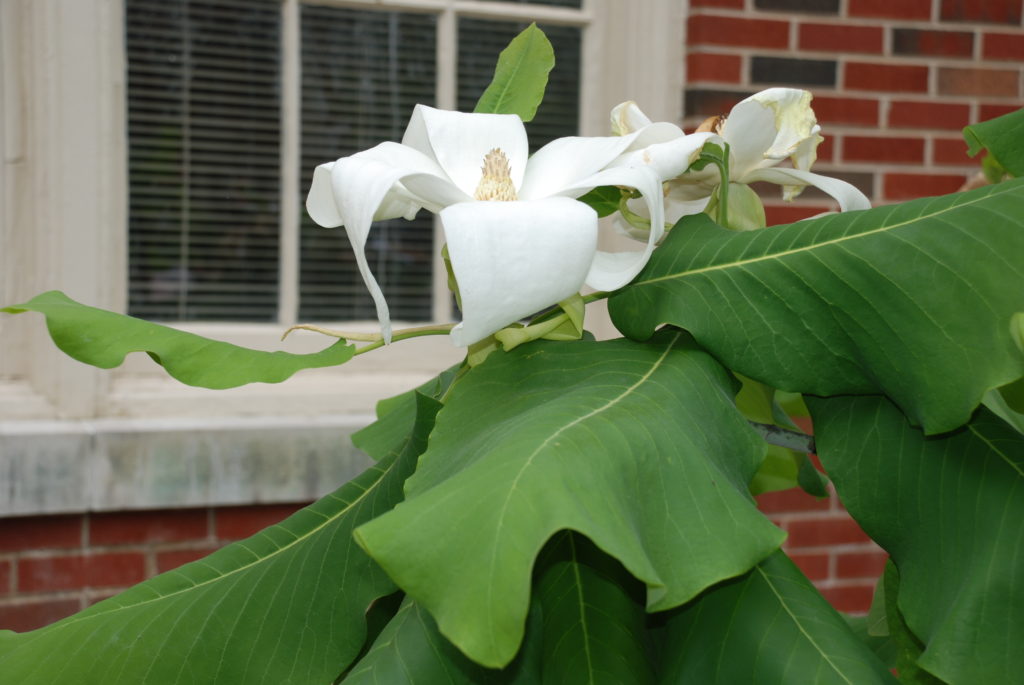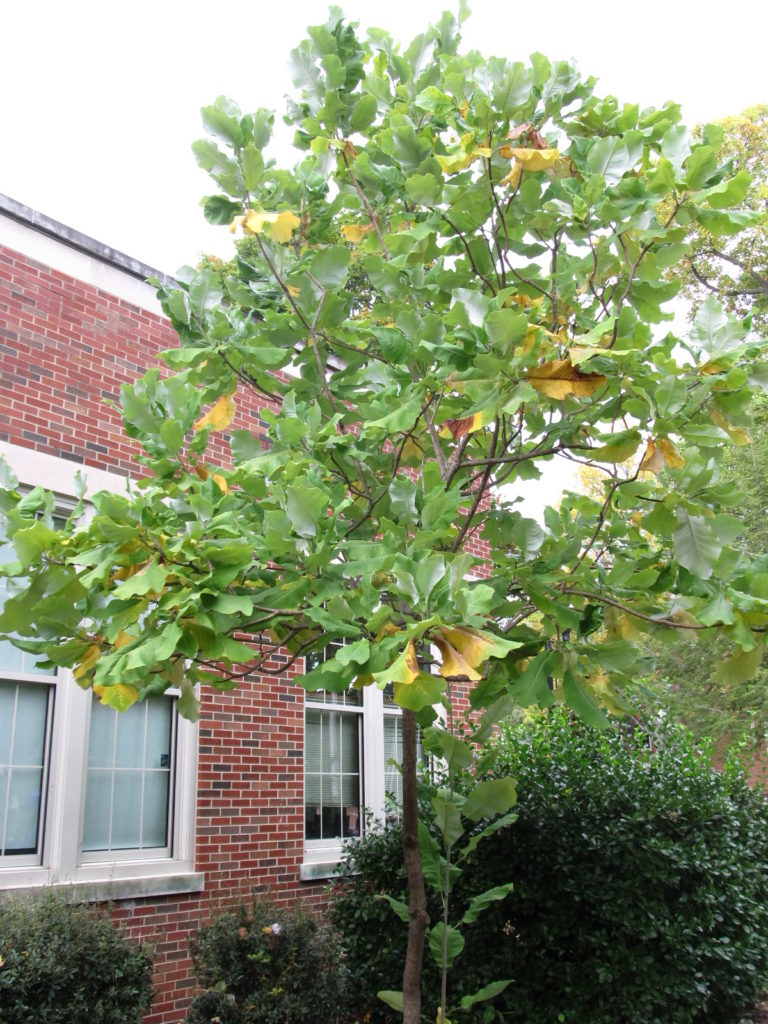Ashe magnolia (Magnolia macrophylla subsp. Ashei) is a small 10-20 feet tree with enormous leaf and flower sizes (zone (5)6-9). Anindividual white flower measures 6- 12 inches across with a purple blotch at the base of 3 inner petal-like tepals. Ashe magnolia blooms in late May – early June in Tennessee. Many of the white blooms may be hidden within the large tropical-like foliage.

Within the large leaf magnolia species, Ashe magnolia is the shortest — the runt of the litter. Its deciduous leaves are 10-16 inches long and 12+ inches wide. Leaves are wider near the tip than at the stem, green on the upper surface and whitish beneath. When fully open, the citrus-scented white blossoms reveal a purple blotch in center that is up to 6 inches long and about half as wide. Ashe magnolia blooms at an early age, usually when only 4-6 feet tall. A seedling may bloom as early as 3 years from seed.
Ashe magnolia is an understory tree, growing in day-long dappled sunlight or morning only sun. Allow Ashe magnolia plenty of room to grow, adequate light, and humus-rich, moist, well-drained soil. Don’t crowd other plants up around the tree. Lightly mulch around the tree to a depth of 3 inches. Over the active growing season, water the tree weekly over the 1-2 years until established.
Ashe Magnolia rarely needs to be fertilized unless growing potted. In a container, apply a slow release fertilizer such as Osmocote® or Nutrikote®. Life in a standard 5- gallon container is only 2-3 years and then it needs to planted in the ground or bumped into container 15 gallons or larger. For container-growing, dig a hole as deep as the container with a diameter to three times the width of the container. Fill the hole, water, and feed with a water soluble fertilizer like Miracle-Grow™ or Peters™.

Ashe magnolia does not thrive in hot and dry environs. The grand champion tree is 44 feet high in Montgomery County in Pennsylvania. In Florida, a tree grows in limestone-rich sandy or clay soil compared to a humus rich North Carolina clay soil. Sheltered sites are best since strong winds can shred the papery leaves and break the brittle branches.
Flower buds may be hurt by late-spring frosts in northern climes such as in New England. Prune in late winter or late summer to prevent bleeding of sap. Constructive pruning may be needed after storm damage and to maintain its desired tree framework.
Ashe magnolia is a tree that a plant collector will love. It is primarily available from a specialty e-mail nurseries. Request the tree’s seed provenance before purchasing. Select from a northern seed source if you garden in zones 6 or 7. The Florida Department of Agriculture lists the Ashe magnolia as endangered, due to its small population and restricted range.

 Posted in
Posted in 
